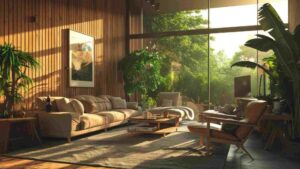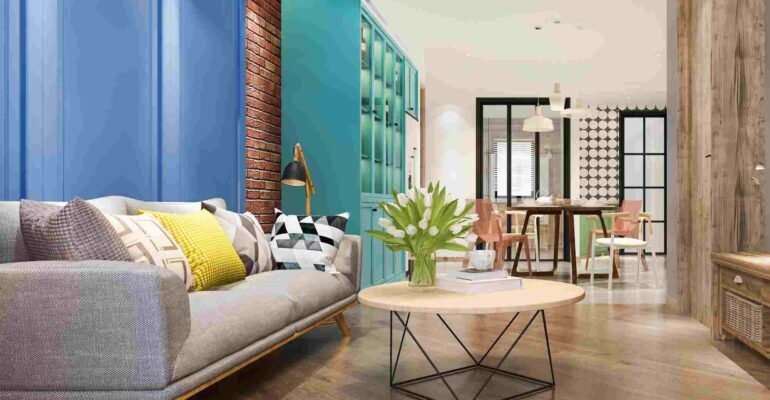“Revolutionizing Interior Design at Dhruva College”
January 9, 2025 2025-01-09 10:28“Revolutionizing Interior Design at Dhruva College”
The interior design industry is evolving at an unprecedented pace, driven by rapid advancements in technology, sustainability concerns, and changing consumer preferences. As we look towards the future, it is clear that interior design will play a pivotal role in shaping how we live, work, and interact with the spaces around us. Dhruva College of Fashion Technology stands at the forefront of this transformation, equipping the next generation of interior designers with the knowledge and skills they need to thrive in a rapidly changing world.
In this blog post, we will explore some of the most exciting trends and innovations that will shape the future of interior design, and how Dhruva College of Fashion Technology is preparing its students to tackle these challenges head-on.
1. Smart Homes and Technology Integration: A New Era of Connectivity
One of the most prominent trends in interior design today is the increasing integration of technology into our living spaces. The concept of the “smart home” has become a reality, with technology advancing rapidly to create fully connected, automated living environments. From voice-activated lighting and climate control to automated security systems and intelligent appliances, smart technology is revolutionizing how we interact with our homes and offices.
At Dhruva College of Fashion Technology, students are not only exposed to the creative aspects of interior design but are also taught how to incorporate cutting-edge technology into their inhabitants. Moreover, the use of technology in design allows for greater personalization and customization.
2. Sustainability and Eco-Friendly Designs: Designing for the Planet
As concerns about climate change and environmental degradation grow, sustainability is becoming a central focus of interior design. Designers of the future must prioritize eco-friendly practices, materials, and solutions to create spaces that are not only functional but also responsible and sustainable. From using renewable materials and energy-efficient appliances to designing layouts that reduce waste and optimize natural resources, sustainability will be at the core of future interior design.

At Dhruva College of Fashion Technology, sustainability is woven into the fabric of the curriculum. Students learn how to choose eco-friendly materials, design for energy efficiency, and create interiors that promote a healthier environment. The emphasis on sustainability extends beyond just materials; it also encompasses the social responsibility of interior designers. Dhruva College encourages students to think about how design can positively influence the communities in which they work.
3. Personalized and Flexible Spaces: Adapting to Changing Needs
As our lifestyles become more dynamic, the need for adaptable, flexible spaces is growing. The traditional concept of fixed, static interiors is being replaced by designs that prioritize customization and functionality. Today’s interiors need to be able to transform and adapt to different needs, whether it’s turning a living room into a home office, or designing flexible public spaces that can accommodate a variety of functions.
At Dhruva College, students are encouraged to think outside the box when it comes to designing adaptable spaces. They learn how to use modular furniture, flexible layouts, and multi-functional design elements to create interiors that can be easily reconfigured. This focus on personalization means that Dhruva graduates will be able to design spaces that cater to individuals’ evolving needs, whether they’re creating a home, a workplace, or a public venue.
4. Biophilic Design: Bringing Nature Indoors
In response to increasing urbanization and the rise of digital technology, many designers are turning to biophilic design, which emphasizes the connection between humans and nature. This approach integrates natural elements into interior spaces, such as plants, natural lighting, and organic materials. Biophilic design not only enhances the aesthetic appeal of a space but also promotes physical and mental well-being by reducing stress, increasing productivity, and improving overall comfort.

At Dhruva College of Fashion Technology, students are taught the principles of biophilic design. They also learn how to optimize natural light, reduce artificial lighting, and create environments that nurture the senses.
5. Virtual Reality and Augmented Reality: Revolutionizing the Design Process
Virtual reality (VR) and augmented reality (AR) are quickly becoming essential tools in interior design, allowing designers to visualize their concepts in a highly interactive and immersive way. This not only saves time and money but also improves the accuracy and effectiveness of the design process.
At Dhruva College of Fashion Technology, students are trained to use VR and AR tools to enhance their design process. As VR and AR technology continues to advance, interior designers will have even more opportunities to create immersive, lifelike experiences that enable clients to truly envision their future spaces.
Conclusion:
The future of interior design holds exciting possibilities, from the integration of smart technology and sustainability to the rise of biophilic design and the immersive potential of virtual reality. As we move forward, the role of interior designers will continue to evolve, and the demand for skilled, forward-thinking professionals will only grow.
Dhruva College of Fashion Technology is committed to preparing its students for this future. By providing a comprehensive, forward-looking education that integrates cutting-edge technology, sustainability, and creativity. Whether it’s creating smart homes, designing sustainable interiors, or reimagining the way we interact with our environments, Dhruva College is shaping the interior designers of tomorrow.






